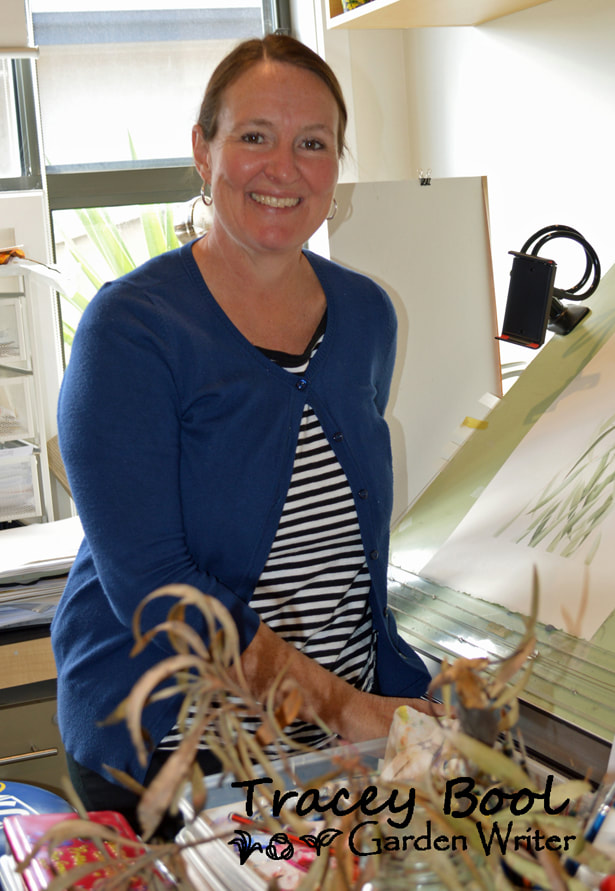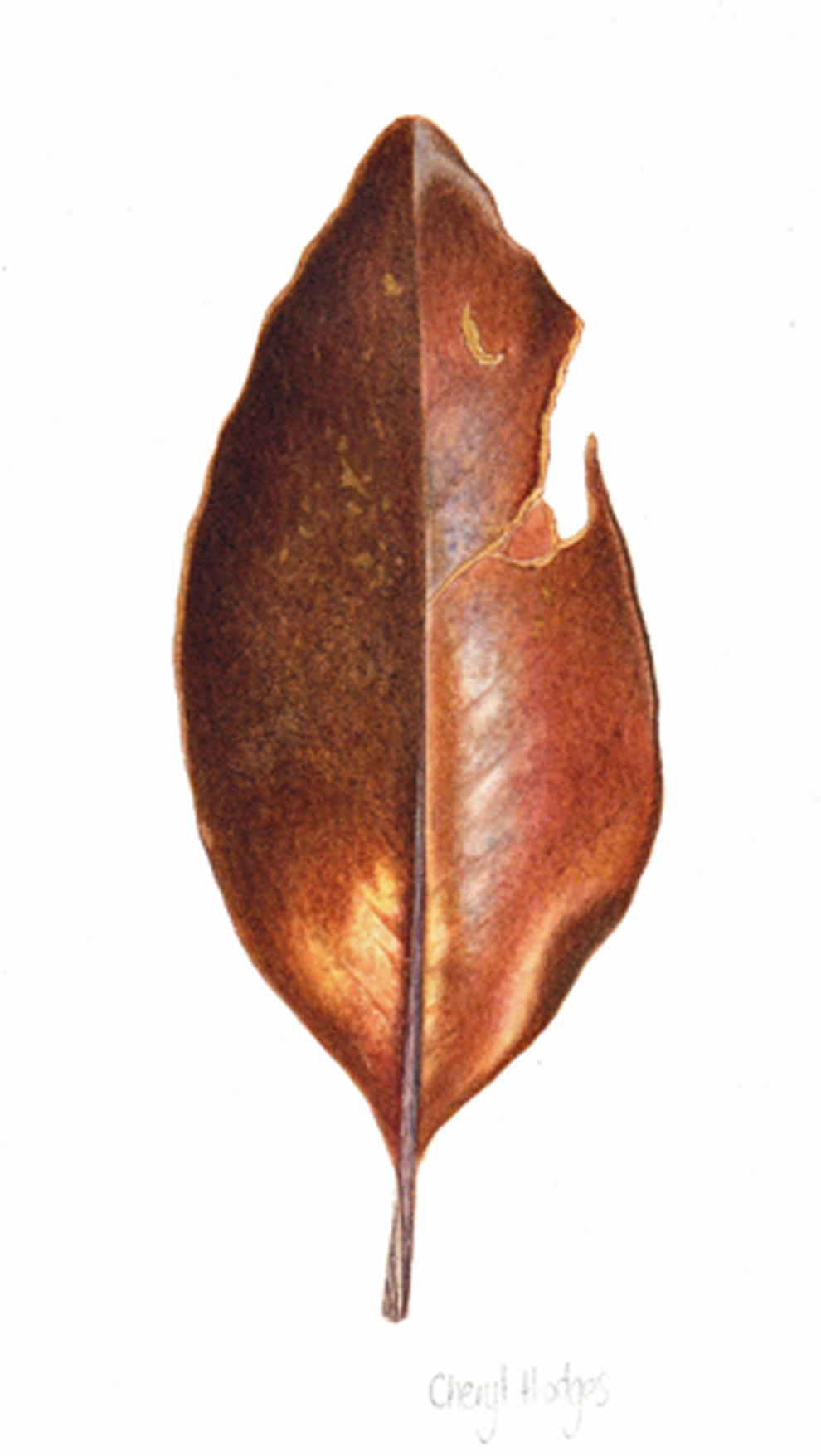|
Botanical artist Cheryl Hodges
(14 June 2018) Talented and well known botanical and insect artist Cheryl Hodges has always considered herself arty. In 1999, her husband suggested trying botanical art classes and she has never looked back. Cheryl has been painting professionally for the past four years with the support from her husband and children. Cheryl does a diversity of work including teaching botanical illustration. As well as paintings, she does some more unusual work; for instance, drawing an Acacia imprint for a chocolate mould. Currently, Cheryl is working on a botanical painting of a weeping form of Eucalyptus pauciflora (Snow Gum), which will take approximately 80 hours to complete. Cheryl thrives on the detail required for the art form, as well as the many and varied stories behind the pieces. Cheryl says she gets great joy from inspiring others through her work, and also raising public awareness about the fascinating life of plants and insects, especially Australian natives. What is botanical illustration? Cheryl said that botanical illustration depicts the different plant parts and stages of a plant’s lifecycle, such as juvenile and adult foliage, buds, flowers, seeds, and stems. This is unlike plant photography, where it is difficult to capture all parts and stages of a plant in the one image. Cheryl considers botanical illustration to be accurate, botanically correct and scientific in nature. It is typically painted in watercolour. Cheryl said that floral art, on the other hand, is generally more informal and not as detailed. She went on to say that artists can push the boundaries between these forms, imparting their own signature on them. What makes botanical illustration unique? Botanical art is an organic, beautiful and accurate way of recording plants across time, making it a historically significant and valued art form. It also has the ability to record the lives and stories behind the people who create the works, bringing meaning and connection to all who see them. Mediums used and the process Cheryl mostly uses hot pressed paper made from cotton, and also vellum, which is made from calf skin and is a bi-product of the meat industry. Cheryl uses both traditional brushes, made of sable, and synthetic ones. Pencil work is done using 4H and 2H pencils. Composing the work is the initial step, which is then copied onto tracing paper using a light box. Cheryl said this process avoids pencil marks on the paper. When painting, Cheryl adds water onto the paper before dropping the paint on. She allows the paint to dry between coats. She adds finishing details with a 4/0 brush. Tips for budding botanical artists
For workshops and more: www.cherylhodges.com |
|



